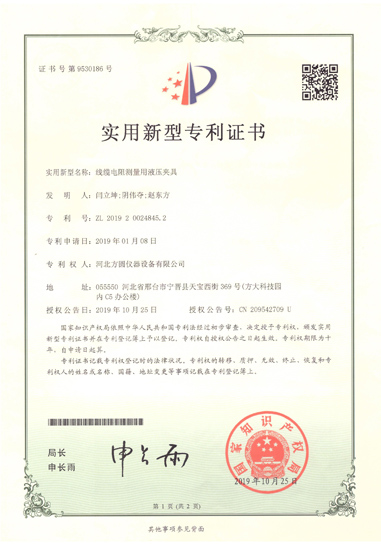resistance measurement fixture
Understanding Resistance Measurement Fixtures
In the realm of electrical engineering and electronics, precise measurement of resistance is crucial for both design and testing purposes. A resistance measurement fixture serves as a vital tool in this process, providing an organized and efficient setup for obtaining accurate resistance readings. By understanding its design and functionality, engineers can ensure their measurements contribute effectively to the development of reliable electronic components.
A resistance measurement fixture typically consists of several essential components. These include measurement probes, a test fixture body, and connection terminals. The probes are designed to make contact with the components under test, ensuring minimal interference and accurate readings. The fixture body houses the probes and helps maintain their positioning, while the terminals facilitate connections to measurement instruments, such as ohmmeters or multimeters.
One of the key advantages of utilizing a resistance measurement fixture is the consistency it provides in readings. Manual measurements can often lead to discrepancies due to variations in contact pressure, probe positioning, or environmental factors like temperature and humidity. By employing a dedicated fixture, these variables are controlled, leading to repeatable and reliable measurements. This is particularly important in quality control processes, where the integrity of components must be guaranteed before they are integrated into larger systems.
resistance measurement fixture

Furthermore, resistance measurement fixtures can be adapted for various testing scenarios. Whether measuring the resistance of simple resistors or complex circuit boards, custom fixtures can be designed to fit specific requirements. For example, fixtures may be created to accommodate different component sizes and shapes, as well as the specific locations of connection points. This adaptability not only enhances the accuracy of the measurements but also streamlines the testing process.
Another significant benefit of structured resistance measurement fixtures is their ability to facilitate automated testing. With the integration of robotics and automated systems, resistance fixtures can be linked to testing platforms that execute multiple measurements in a fraction of the time it would take manually. This automation not only increases throughput but also reduces human error, further improving the reliability of results.
For educational institutions and research facilities, resistance measurement fixtures serve as invaluable teaching tools. They provide students and researchers with hands-on experience in measuring electrical parameters, reinforcing theoretical knowledge with practical application. As students engage in testing, they gain insights into the principles of resistance and the importance of accurate measurements in real-world applications.
In conclusion, resistance measurement fixtures are indispensable tools in the fields of electronics and electrical engineering. They enhance measurement accuracy, ensure repeatability, and enable both manual and automated testing processes. As technology continues to advance, the design and functionality of these fixtures are likely to evolve, further reinforcing their importance in ensuring the reliability and performance of electrical components. Understanding and implementing effective resistance measurement fixtures will remain a fundamental aspect of engineering practices for years to come.
-
Why the Conductor Resistance Constant Temperature Measurement Machine Redefines Precision
NewsJun.20,2025
-
Reliable Testing Starts Here: Why the High Insulation Resistance Measuring Instrument Is a Must-Have
NewsJun.20,2025
-
Flexible Cable Flexing Test Equipment: The Precision Standard for Cable Durability and Performance Testing
NewsJun.20,2025
-
Digital Measurement Projector: Precision Visualization for Modern Manufacturing
NewsJun.20,2025
-
Computer Control Electronic Tensile Tester: Precision and Power for the Modern Metal Industry
NewsJun.20,2025
-
Cable Spark Tester: Your Ultimate Insulation Assurance for Wire and Cable Testing
NewsJun.20,2025
 Copyright © 2025 Hebei Fangyuan Instrument & Equipment Co.,Ltd. All Rights Reserved. Sitemap | Privacy Policy
Copyright © 2025 Hebei Fangyuan Instrument & Equipment Co.,Ltd. All Rights Reserved. Sitemap | Privacy Policy
